World 🢖 Asia 🢖 China 🢖 Chongqing Municipality
Sinkholes 🢔 Caves 🢔 Geological wonders 🢔 Categories of wonders
Wonder
Xiaozhai tiankeng
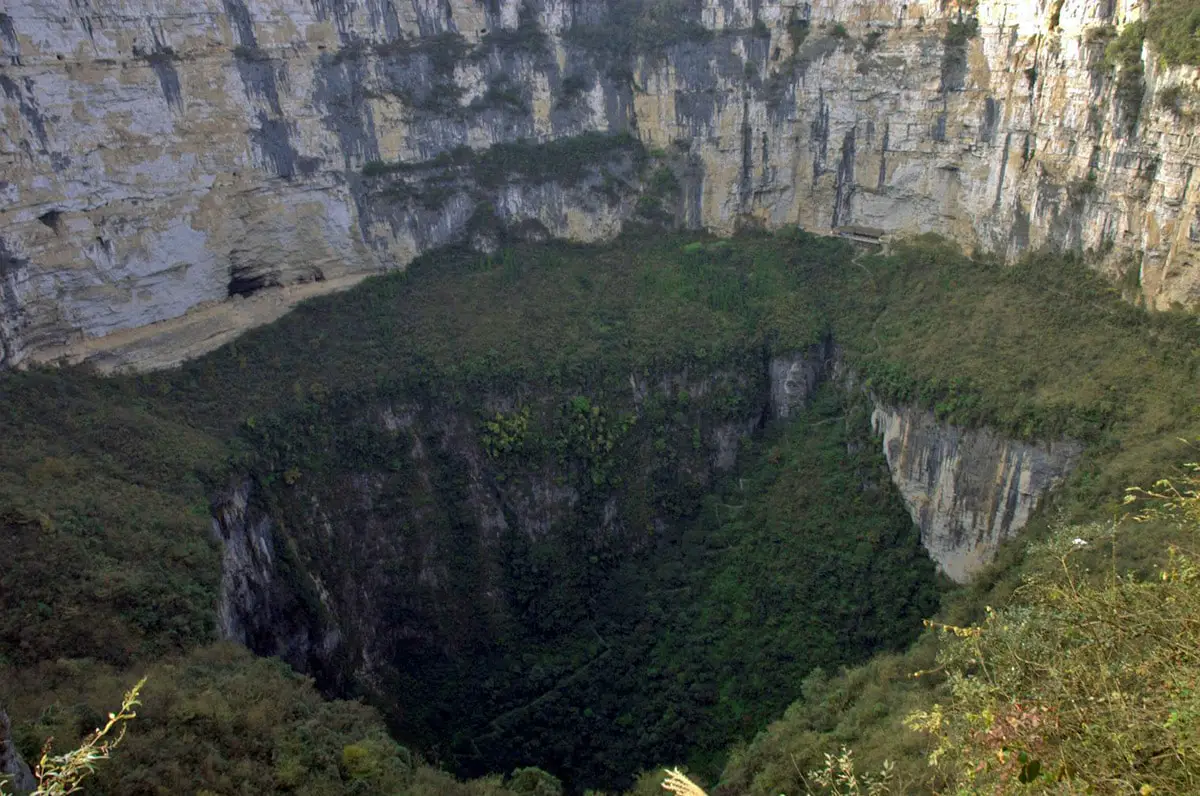
 In short
In short
The largest sinkhole of the world is Xiaozhai tiankeng – incredible, up to 662 m deep pit with nearly vertical walls. This is one of the most impressive natural attractions on Earth.
 53.3%
53.3%
GPS coordinates
Depth
Volume
Map of the site
If you see this after your page is loaded completely, leafletJS files are missing.
 In detail
In detail
Heavenly pits – tiankengs
Origin of term
Since recent times scientists have proposed a special name for especially large sinkholes – tiankeng. This could be translated from Chinese approximately as “heavenly pit” or “sky hole”.
Tiankeng is a giant sinkhole with vertical walls, at least 100 m deep and 100 m wide. Most often bottom of tiankeng is crossed by an underground river, which is open to daylight only here.
Such structures are found in several countries (Papua New Guinea, Malaysia, Mexico) and, for example, in Mexico, such giant holes are called – sótano. But out of some 75 giant sinkholes of the world some 50, including the largest ones, are located in China. Thus to a large extent, this is truly a Chinese term for the Chinese phenomenon.
First tiankengs were documented in China in the early 1980s. The term “tiankeng” was proposed in October 2001 by Zhu Xuewen, China Cave Study Association and Institute of Karst Geology in Guilin.
How tiankengs are formed?
Nearly all tiankengs have developed in carbonate rocks with the noble exceptions of Sima Humboldt and Sima Martel in Venezuela, which have formed in sandstone.
Like other sinkholes, tiankengs are formed by karst processes (in carbonate rock) or suffosion (in sandstone). In karst processes rock is dissolved and carried away by flowing water, suffosion is a similar process, where particles of sandstone or similar rock are carried away by water.
Formation of tiankengs though requires very specific conditions, and a combination of these factors is very rare in nature. Thus – the correct recipe for a fine tiankeng looks like this:
- There is needed extremely thick and very clean layer of carbonate (or sandstone) rock. The thickness of the rock should be at least 200 – 300 m. Any layer of impurities will distort the process of formation.
- The layer of carbonate should be above sea level. It is even better if the area is raised by tectonic processes. Thus, for example, the Nakanai mountains in New Britain (Papua New Guinea) rise by some 3 mm in a year, also in China, the areas with tiankengs are rising.
- There is needed lots of rain. In areas with carbonate rocks, this inevitably leads to the formation of underground rivers. If the limestone layer is raised high, these rivers are flowing several hundred of meters below the surface.
If this is in place, nature does its work and tiankeng is formed.
In most cases there form collapse tiankengs – here underground rivers form giant underground rooms which at some moment collapse until the former cave room is turned into a vertical pit. The water of a powerful underground river dissolves the rock debris and carries it away.
There are known cases when erosion tiankengs develop – like Houping Tiankeng cluster (Chongqing Municipality). These giant holes are created by the source of underground rivers – here small streams fall through the many hundred meters thick limestone layers until they reach the impermeable rock. Then these streams continue like underground rivers. Gradually at this entrance is formed a hole which then increases up to incredible proportions. Nowadays such erosion tiankengs have beautiful waterfalls falling in them.
Tiankengs seem to be more short-lived than most other geological features. Initially, tiankeng forms as a smaller hole above the giant cave collapse, then this hole widens until the walls are vertical. The walls gradually erode and the former tiankeng turns into a forest-covered, enormous bowl-shaped depression.
Tiankengs belong to the most spectacular geological formations of the world and often house important biological values.
Largest sinkhole in the world – Xiaozhai tiankeng
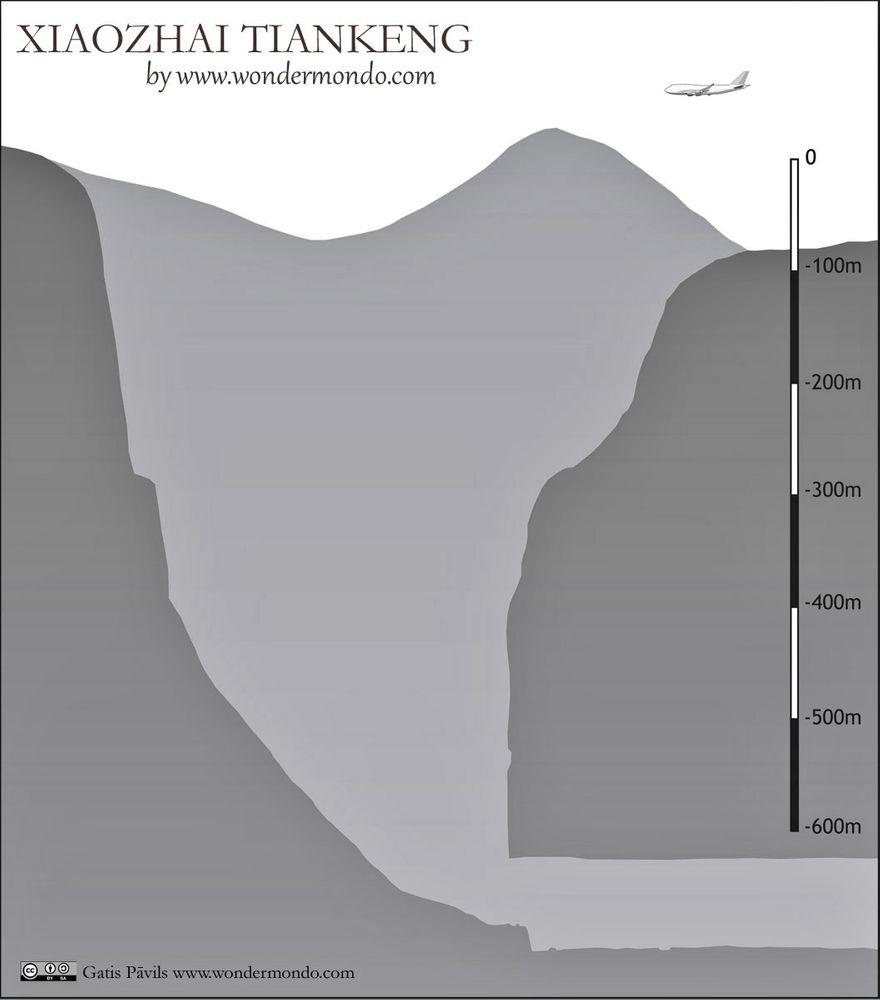
Xiaozhai tiankeng was discovered by specialists in 1994 during the search for a new exploration site for British cavers in the China Caves Project.
In fact, it was well known to local people since ancient times. Next to this sinkhole was a small village – Xiaozhai. The name of the village in translation just means “little village”. Nowadays it is abandoned.
Already in Chinese classical works frequently are mentioned mysterious and deep ravines – possibly they describe tiankengs.
Xiaozhai tiankeng has incredible size. This hole is 626 m long and 537 m wide. The total depth is 511 – 662 m. The area of the opening is 274,000 m², volume – 119.348 million m³. All these millions of cubic meters have been dissolved and carried away by the river.
The sinkhole is a double nested structure – the upper bowl is 320 m deep, the lower – 342 m deep, and 257 – 268 m across. Between both these steps is a sloping ledge. This ledge has formed due to a muddy, “dirty” layer of limestone.
In wet weather, there is seen a waterfall falling into tiankeng.
This is one of three very large tiankengs worldwide – the other two are Dashiwei tiankeng and Haolong tiankeng (both in China).
Underground river and cave
Tiankeng has formed over the Difeng cave, which in turn has been formed by a powerful underground river. This river still crosses the bottom of tiankeng.
The underground river starts in Tianjing (Tiangjingxia) fissure gorge and reaches the daylight in the vertical cliff above the Migong River, falling like a waterfall 46 m high. The whole length of this underground river is approximately 8.5 km and during these 8.5 kilometers, it falls 364 meters. The average annual flow of the river is 8.77 m³ per second, but the flow rate can reach even 174 m³/s. This steep, powerful river has created the world’s largest sinkhole.
River and Difeng Cave have been explored and mapped in 4 km length by China Caves Project in 1994.
Location and geology
Tiankeng is located in a 280 km² large karst area, formed by lower Triassic limestone, Jialingjiang formation. The limestone here is extremely pure and even separate layers are not visible: it is just a monolithic, very thick block of pure limestone.
This tiankeng most likely formed over the last 128,000 years. For the most part of this time, it was an underground void, which gradually increased. The ceiling of this giant cave room collapsed several tens of thousands of years ago.
Not too far there are six more tiankengs – all other tiankengs in this area seem to be older than Xiaozhai.
Unique biotope
The bottom of this sinkhole is large enough to sustain a small, isolated world full of life. Here have been registered 1,285 species of plants, including such rare plants as ginkgo (Ginkgo biloba L.) and many rare animals like a clouded leopard (Neofelis nebulosa Griffith, 1828) and many others.
Tourism
Xiaozhai tiankeng belongs to a league of the most magnificent natural attractions of the world. We can be sure that it will be the desired destination for countless foreign tourists as well.
Domestic tourism in China is flourishing and starts to bring good profit to rural people. Thus any exciting attraction here turns into real economic value.
Earlier Xiaozhai tiankeng was nearly inaccessible, but the incredibly fast development of China over the last decade has brought many new roads to this area. Here has been developed also a zig-zag pathway with 2,800 steps descending into the tiankeng.
References
- Zhu Xuewen, Chen Weihai, Tiankengs in the karst of China. Speleogenesis and Evolution of Karst Aquifers. The Online Scientific Journal. Accessed on the 31st of July 2010.
- Zhu Xuewen, Tony Waltham, Tiankeng: definition and description. Speleogenesis and Evolution of Karst Aquifers. The Online Scientific Journal. Accessed on the 31st of July 2010.
Xiaozhai tiankeng is included in the following lists and articles:
 Linked articles
Linked articles
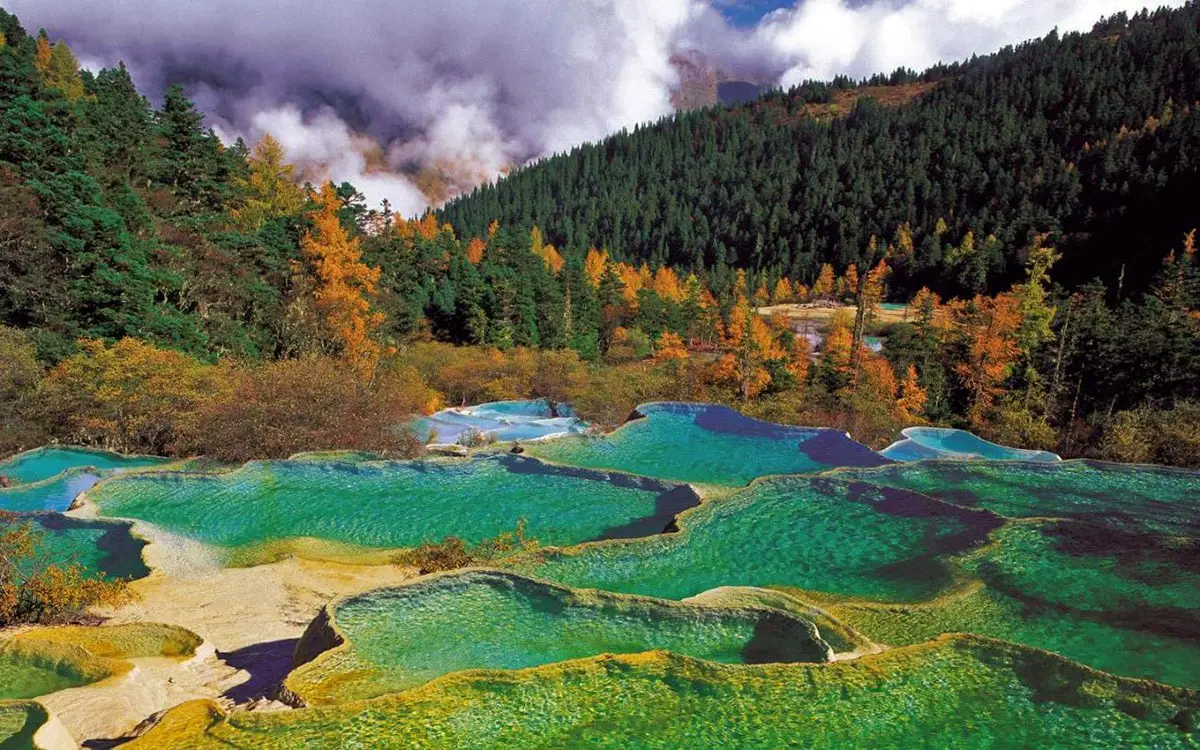
Wonders of China
China has got it all – more than one billion people, a large area, a great and very long history, very distinct and at the same time – very diverse cultures, great and varied nature.
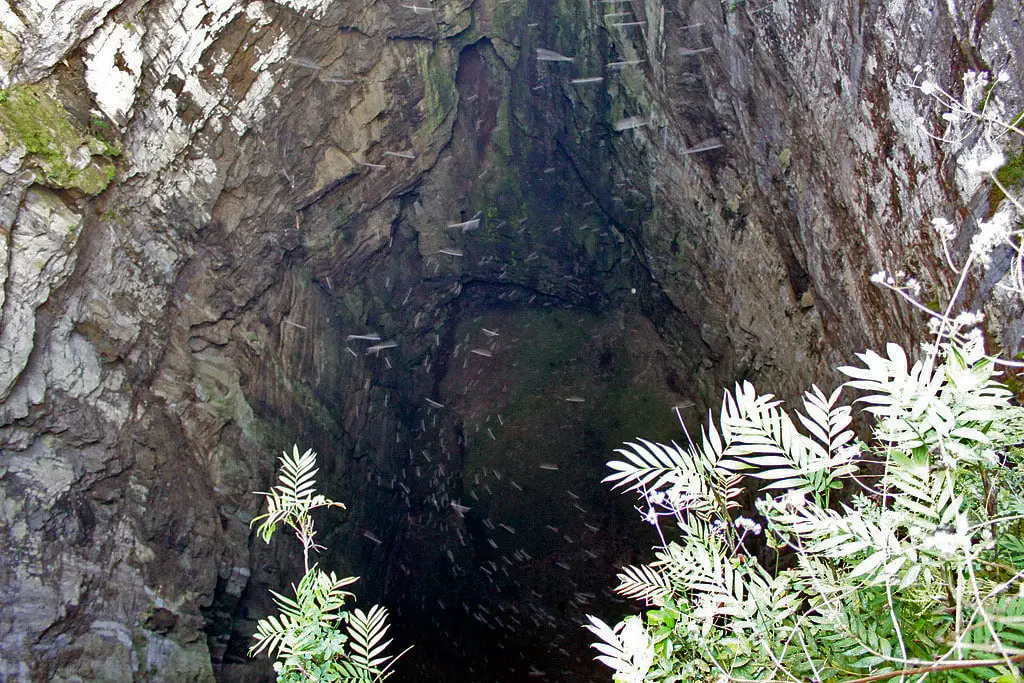
Largest and most impressive sinkholes of the world
A unique list of some of the world’s most impressive natural landmarks – giant sinkholes.
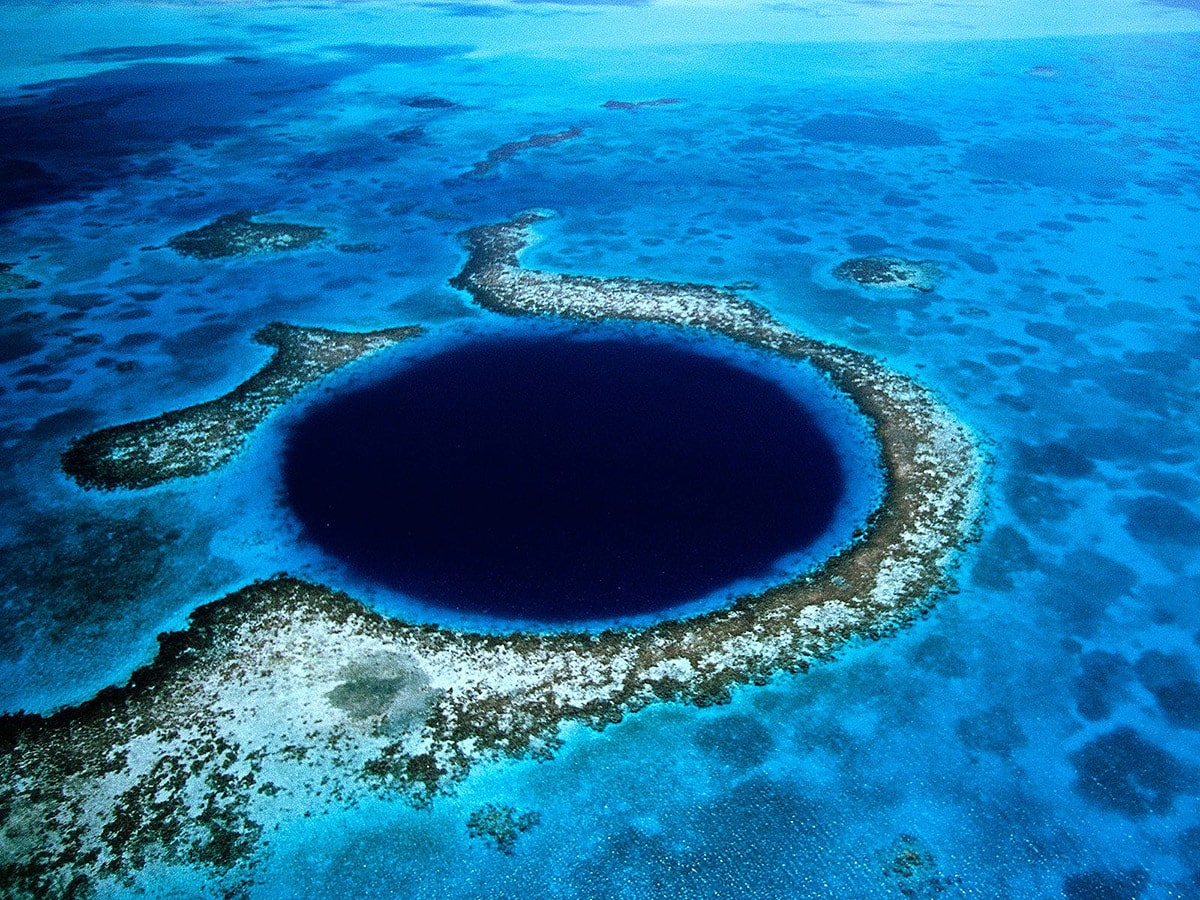
Sinkholes
This category includes outstanding sinkholes – large natural depressions or holes, which for most the part represent collapsed caves.
 Recommended books
Recommended books
Caves: Exploring Hidden Realms
A companion volume to the new IMAX film offers a sumptuously illustrated, close-up look at the world’s great cave environments, capturing the wonders and perils of caving and describing the unique characteristics of these underground habitats.
Karst in China: Its Geomorphology and Environment
This is the first study of the karst areas of China to be carried out by a Western geomorphologist, and almost all the sources are from Chinese works, as yet unpublished in the West. Karst areas are sensitive to environmental influences and Chinese attempts to deal with these are discussed here, as are Chinese methods of studying karst since they differ somewhat from those in the West.

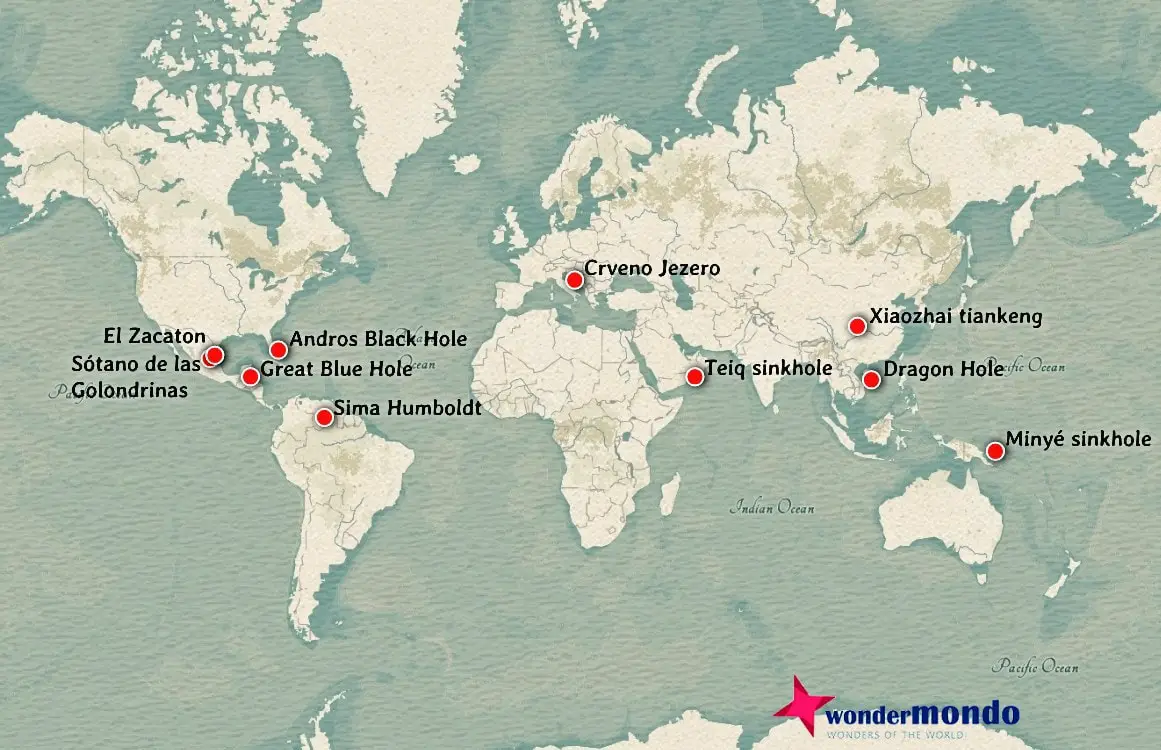
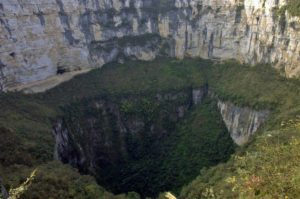


[…] y como explican los geólogos, se ha formado sobre una cueva y acoge un río subterráneo que mide en total 8,5 kilómetros y acaba en una espectacular cascada. Su enorme tamaño hace de Xiaozhai Tiankeng el sumidero de su […]